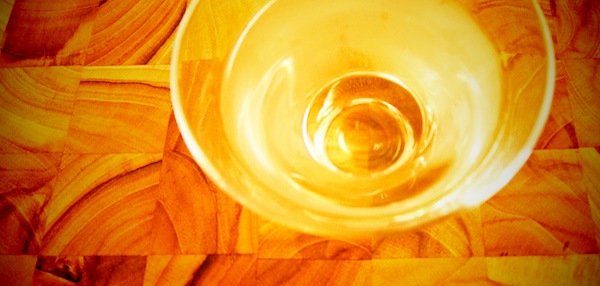one hundred cocktails
drinking with a purpose
← The Fogcutter (Early) | The Fred Collins Fiz→
The Ford Cocktail
23 Feb 2012
One of the upsides of the new blog layout is I can go wider than 450 pixels. Check this out:

Yeah. 150 pixels wider is way better. You can almost taste the drinks!
Whatever. So that’s what goes into the Ford Cocktail. Martini & Rossi dry vermouth isn’t my preferred option to Noilly Prat, but shit happens. The Yarai dasher on the right is full of a half and half mix of Fee’s West Indian and Regan’s No 6, because that’s what the pros do and I’m a wannabe. While I now make my own bitters I’m trying to some degree to stay on the reservation and get these things right.

This was a weird one. It wasn’t bad, but the initial flavor profile was extremely vermouth-dominated. Maybe a stronger gin would knock some of that out, but it seems a bit silly. Maybe a better vermouth would save it.
What was interesting was that as the drink evolved (I guess it warmed up, I don’t think the mixture really changed), it got more interesting. Towards the end the Benedictine and orange bitters really provided some intrigue and complexity. I wish that was there all along, but I can grant that this cocktail is more than it seemed at first – perhaps it was just too cold. I think if I were to swap the M&R for some Vya and replace the Plymouth with something a bit less neutral, this has potential, indeed.
With that said, I think a well-made contemporary classic (if that’s not an overly loaded phrase) Martini made with a few dashes of orange bitters probably has this licked. Neat as an experiment, but not something I’m going to keep on the list.
The Ford Cocktail, Revisited
Of course, the devil’s in the details, and I didn’t pay attention to the details. In cocktails, especially, small differences in ingredients or preparation can make a big difference in the final product.
So. The first problem is the gin. I used Plymouth Gin, but the recipe called for Old Tom. Excepting Jenever, I picked about the most extreme wrong choice possible here.

The second problem is the method of preparation. I mixed in a pitched with ice, but the recipe in fact calls for mixing with finely crushed ice before (presumably double) straining. The surface area of the ice has a lot to do with the water mixture in the final product, or at least so goes the theory. If nothing else, more surface area means less time mixing to get to a particular temperature.

And finally, there’s the garnish. A citrus peel garnish is far from a subtle influence on the flavor of a cocktail. Try a Negroni without a burnt orange peel or a Sazerac without the lemon peel. It’s not the same drink.

So, the revised version of the drink has more balance than my first misguided attempt. With the balance a bit of the richness and complexity of the constituent ingredients comes out. As a noble alternative to a classic Martini, there’s some intrigue here, but I don’t think anybody would want to try more than one of them.
Copyright © 2011 - 2012 Aaron N. Tubbs